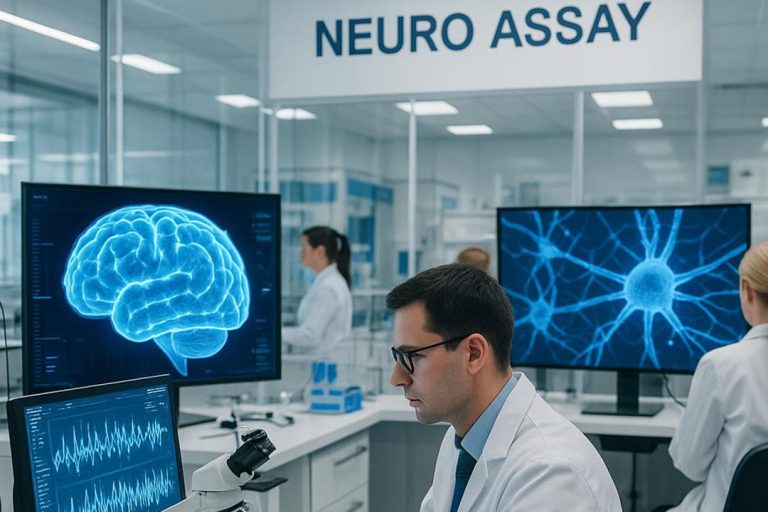Comparison of CSF-based vs. blood-based neuroassays is essential for neurologists when choosing the optimal diagnostic method. Both approaches offer distinct advantages and limitations depending on the clinical scenario, biomarker target, and disease specificity.

Why Biomarker Source Matters in Neurological Diagnosis
Cerebrospinal fluid (CSF) and peripheral blood are the two most commonly used biological matrices in neuroassay testing. The source significantly influences assay sensitivity, specificity, and invasiveness.
CSF-based Neuroassays
CSF directly reflects the biochemical environment of the central nervous system (CNS). As such, CSF-based neuroassays provide high diagnostic accuracy for diseases such as Alzheimer’s, multiple sclerosis (MS), and autoimmune encephalitis.
- High CNS specificity
- Ideal for detecting intrathecal antibody synthesis
- Useful for early-stage biomarker discovery
Limitations of CSF Sampling
- Invasive lumbar puncture procedure
- Not ideal for routine or repeated testing
- May be contraindicated in patients with elevated ICP or coagulopathy
Advantages of Blood-based Neuroassays
Blood-based neuroassays are less invasive, easier to obtain, and more practical for serial monitoring. Recent advancements have improved the sensitivity of plasma-based biomarkers, making them promising for screening and follow-up.
Clinical Utility of Blood-based Tests
- Non-invasive and accessible
- Allows frequent testing and disease progression tracking
- Potential for large-scale screening in population studies
Challenges of Blood-based Neuroassays
- Lower specificity due to systemic dilution
- Biomarkers may cross the blood-brain barrier only in late disease stages
- Greater risk of false positives from peripheral sources
Choosing the Right Matrix: CSF or Blood?
The choice between CSF-based and blood-based neuroassays depends on clinical goals:
- Use CSF when CNS specificity is crucial (e.g., autoimmune encephalitis)
- Use blood for screening, therapy monitoring, or when CSF collection is not feasible
Emerging Solutions
Ultra-sensitive technologies such as Simoa (Single Molecule Array) and neurofilament light chain (NfL) quantification are bridging the gap between CSF and blood-based biomarker reliability.
Conclusion
Understanding the differences between CSF-based and blood-based neuroassays allows neurologists to choose the most effective diagnostic tool for each patient. Advances in assay sensitivity are making blood-based testing increasingly viable, but CSF remains the gold standard for CNS-specific conditions.
Further Reading
For more on neuroassay methods, visit the Alzheimer’s Forum, a leading platform for neuroscience research and biomarker development.

